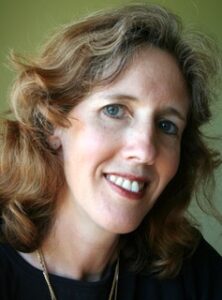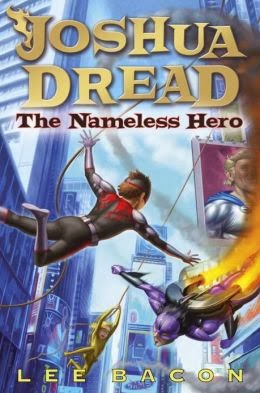Suzanne Ingelbrecht, author of Tumblagooda, chats to Reading Time reviewer, Maura Pierlot about her debut novel for readers age 7 to 9, published by Dragonfly Publishing.

You’ve said elsewhere that Tumblagooda was part-inspired by family holidays to Kalbarri. Can you tell us more about that? Did you travel there again when writing the book, or since its release, and what did you discover?
I had doodled around for quite a while, playing with the idea of Tumblagooda as a title. It’s actually the Western scientific name of the ancient sandstone formations around Kalbarri in WA and I’d come up with some weird abstract tale that wasn’t working. So, in 2019, during a creative lull, I made a special research trip to Kalbarri to see if, when I knuckled down and thought more deeply about the Tumblagooda geology, something more interesting would pop up for me. I spent a few weeks there, reading a series of Kalbarri community oral histories that local resident Felicity Graham had put together; interviewing local residents, including Felicity herself. I’d already decided that I wanted to set the book in the ‘70s before the Internet, before devices, even in some cases before colour television! And when I came across the cyclone event from March 1979 that caused some damage to the town, that lit a flame within me… I visualised a fossil cracking open at the height of a massive storm, releasing a mysterious creature; and then I started to visualise the children who would help it/her. I wrote the first drafts before and during Covid, and when the editing process began in earnest in 2021, of course that’s when Cyclone Seroja came through Kalbarri, and really hit the community for six. It was quite sobering to go back earlier this year and see the places where the building infrastructure is still under re-construction; and yet to also realise through my conversations with local people how incredibly resilient and strong everyone is. When Tumblagooda 1 was launched in Kalbarri in July, 2023, I stayed on to re-continue my reading of local history and write the first drafts of Tumblagooda 2 – which really continues where Tumblagooda 1 leaves off; and I’ll go back again next year to reconvene with Tumblagooda 3!
 Steeped in history, Tumblagooda features a well-drawn protagonist, humour and adventure. How do you combine these various elements to create a rollicking good read?
Steeped in history, Tumblagooda features a well-drawn protagonist, humour and adventure. How do you combine these various elements to create a rollicking good read?
I think pacing is incredibly important in any adventure story. You can’t be in a state of frenetic activity all the time because that is unrealistic and exhausting for character and reader alike! To include moments of calm, when there is an opportunity for deeper character reflection, is part of the joy of building a rollicking good read; one in which greater character exploration and revelation can ‘touch’ the reader in a more meaningful way. So, I deliberately look for moments within the ‘action’ when I can build quieter, more reflective – self-reflective – moments; or when I can surprise through a moment of humour or wit. I love humour and comedy as part of writing; and I’ve learnt that the best humour comes from the organic actions and words of the characters themselves.
You’re a debut children’s book author but an established playwright. Did your dramatic writing experience help or hinder your children’s fiction-writing journey? How does writing children’s books differ from writing for the stage?
I strongly believe my skill as a dramatist aids rather than hinders my fiction for children because I’m super-aware if the stakes are too low or if my characters’ dialogue is coming across as clunky or unrealistic. But there is a big difference in writing chapter prose rather than a script. For one, I get to practice my objective descriptive ability in my prose, which I enjoy very much because I don’t get to exercise it that much through dialogue and scene directions!
Where do you get your (writing) ideas and inspiration from?
My inspirations are quite varied. Sometimes, an idea for a character will form and then the story will coalesce around that character; or sometimes someone will say something strange, and it becomes a kind of mantra that sparks an idea for a story structure. As a playwright, I’m lucky that I can ‘hear’ what characters are saying, and that ability often drives the stories I write. I spend quite a lot of time in back-and-forth dialogue between different characters to see whether I’m achieving what good drama should: moving story forward whilst revealing character: their flaws and contradictions as well as their selflessness and courage.
What are some of your favourite books from childhood and how, if at all, have they influenced you as an artist?
As a kid, I loved adventure stories and stories whose characters made me laugh. So Richmal Crompton’s ‘Just William’ series was a huge favourite – and to this day, I love mimicking Violet Elizabeth Bott’s “I’ll thcream and thcream ’till I’m thick”! I also loved Enid Blyton’s Famous Five and Secret Seven series of books and imagined I was off on some adventure of my own, discovering smugglers’ caves or buried treasure…haha!
What are some of the challenges and joys of being a writer (in any genre) today?
I think self-doubt is a perennial writer’s handicap! And all the questioning we do is part of that doubt…Is the story strong? Do the characters leap from the page? Will a director want to direct this piece? Will I find a publisher? (Etcetera)…Getting your work before any audience, whether viewers, or listeners, or readers, is an extraordinary thing. So, when you ‘achieve’ that, when your work is out there before the public, you have done something extraordinary. Never doubt that for one moment!

What’s the most valuable piece of writing advice someone has given you?
Less is more. I think it may well have been said by one of my creative writing lecturers at university…but it’s been a mantra I try to live by in my writing life because it’s a reminder not to puff out anything for the sake of it; and that editing and self-editing are vital tools in your box. Inherent in these three words also is the idea that if you don’t give everything away, you allow the reader to fill in the gaps for themselves; to allow their own imaginations to take flight and reach conclusions for themselves.
Gives us an update on your current travels. Is Van Go a good travel companion? What have been the highlights so far?
Van Go is an excellent travelling soulmate! I give her a pat on her bonnet every time she gets me over a watery creek bed or over a potholed, gravelled road. Even though she’s got low clearance and is a 2WD, we’ve been to some fabulous places…Memorably, we took a poet friend of mine down a ‘closed’ road in the Kimberley to visit an ancient Devonian reef complex that’s thankfully well off the tourist route (for now!). That’s been a highlight. But also camping 10 metres from the Bunda Cliffs’ edge over the Great Australian Bight in South Australia. Lucky for us, that day the weather was good…the elements – fire, water, air, earth in perfect harmony. ????
Thanks, Suzanne and best of luck with your book!
You can read Maura’s review of Tumblagooda here.




